|
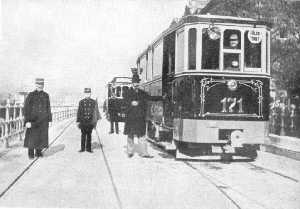
|
The D type car 171 on the Pest Danube-bank viaduct line. As can be
seen, the car had extremely elegant look. The cars had only conduit current
collectors (the E type was suitable for overhead-wired lines too).
|
|
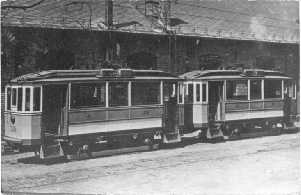
|
During the BSzKRt (Budapest Capitol Transportation Co.) the D type
recieved numbers 2300-2319. In 1924 from these cars the company made the
first twin-car type of the world - wich later remained the speciality of
the Hungarian tram networks. The two one motored-cars were coupled, and
recieved the electric outfit of a single two-motored car. So this unit
had a passanger carrying capacity of a motor+trailer unit, but was suitable
to moveboth direction - avoiding the building of sophisticated loops.
Here's the pair 2316+2317 in Aréna-depot around 1924, with an unusual
standing of collectors.
|
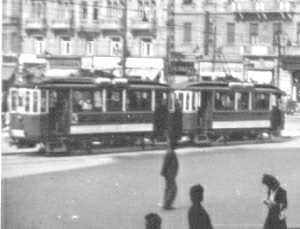 |
A twin car on line 46 in front of Keleti pályaudvar (Eastern Rwy. Sta.)
in the '30s, on its terminus. |
|
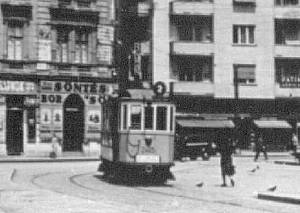
|
The 10 E type car recieved in 1923 numbers 2400-2409. The small cars
ran mainly on line 2 - a very comlicated line running on the narrow streets
in the inner-city of Pest.
Here's the car 2405 in the '40s, on line 2.
|
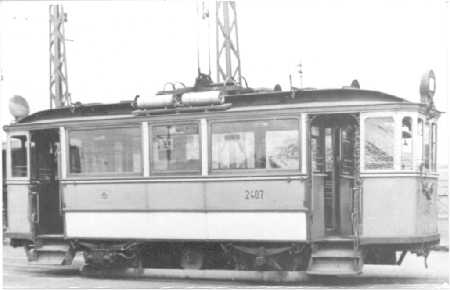 |
The car 2407 in depot, during the BSzKRt era. |
|
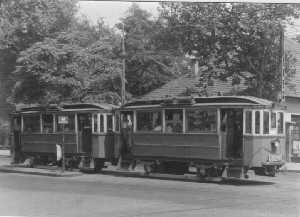
|
The D type twin-cars recived in 1949 stronger Belgian motors, a remained
in service until 1956-57.
On this photo: the cars 2309+2308 at Lehel út-Dózsa György út on line
15; in 1956.
|
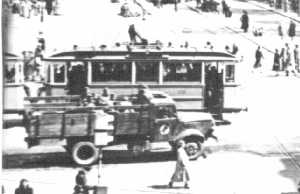 |
The E type cars were partially scrapped - partially made twin-cars
(three pairs) in 1949.
Here's an E type twin-car on line 48 in the '50s; at Astoria.
|
|
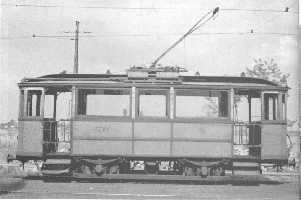
|
In 1950 the car 2407 - instead of scrapping - was sold to Szeged; here
it carried number 78. On the photo it is near the depot, in 1962. |







